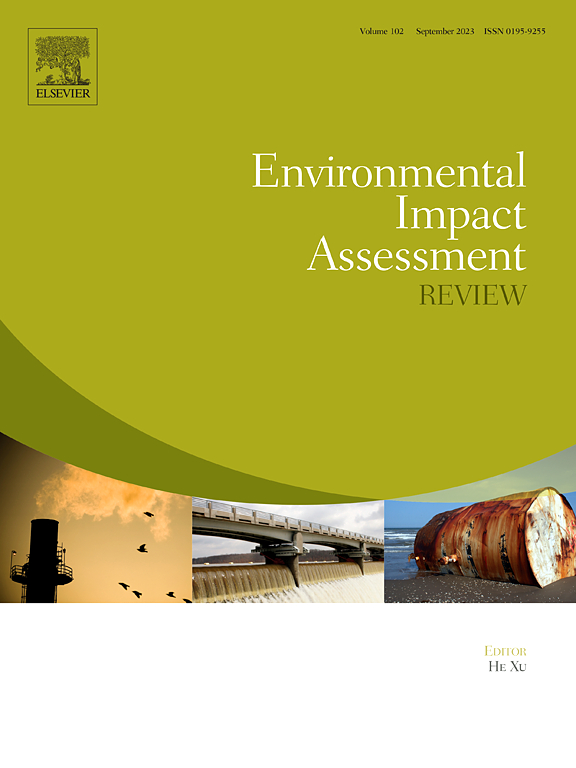Assessing the impacts and driving factors of land regulation on urban and rural environmental pollution
IF 9.8
1区 社会学
Q1 ENVIRONMENTAL STUDIES
引用次数: 0
Abstract
Land regulation plays a crucial role in shaping environmental outcomes in both urban and rural areas along with global climate change. This study examines the impacts of land regulation on environmental pollution and identifies key driving factors influencing this relationship. Using a comprehensive dataset and empirical analysis, we assess how land regulations affect environmental pollution levels across diverse regions. The findings reveal that although both urban and rural areas are making progress in reducing environmental pollution, rural areas remain more polluted than urban ones. Compared to 2007, the difference between rural and urban environmental pollution increased by 7.24 % in 2022. Urban and rural environmental pollution have exhibited opposing trends in their evolution. While urban environmental pollution has increased, rural environmental pollution has shown a declining trajectory. In 2010, the gap was the smallest, almost negligible (0.11). In 2021, the difference between rural and urban pollution levels reached its peak (9.78), meaning the gap between the two was at its widest. The research shows that in urban region, factors like land regulation (−0.252), economic development (−0.438), industrialization (−1.734), marketization (−0.700), and environmental regulation (−0.428) are linked to lower pollution levels. On the other hand, urbanization (0.029) and global integration level (0.294) are the key factors that contribute to higher pollution level. While in rural region, economic growth (−0.686) helps reduce rural pollution, but factors like industrialization (1.387), urbanization (0.029), and increased market (2.075) or global integration (0.131) contribute to worsening pollution in rural areas. In the eastern and western region, the land regulation leads to a reduction in urban environmental pollution but results in an increase in rural environmental pollution. In the central region, the land regulation has no impact on urban environmental pollution but leads to an increase in rural environmental pollution. The research aims to make contribution by distinguishing the impacts of land regulation in urban and rural environmental settings and offering region-specific policy recommendations to balance development and environmental sustainability.
土地调控对城乡环境污染的影响及驱动因素评价
土地监管在塑造城市和农村地区的环境结果以及全球气候变化方面发挥着至关重要的作用。本研究探讨土地管制对环境污染的影响,并找出影响这种关系的关键驱动因素。利用综合数据集和实证分析,我们评估了土地法规如何影响不同地区的环境污染水平。调查结果显示,尽管城市和农村地区在减少环境污染方面都取得了进展,但农村地区的污染仍然比城市严重。与2007年相比,2022年城乡环境污染差距扩大了7.24%。城市和农村环境污染在演变过程中呈现出相反的趋势。在城市环境污染加剧的同时,农村环境污染呈下降趋势。2010年,这一差距最小,几乎可以忽略不计(0.11)。2021年,城乡污染水平差距达到峰值(9.78),这意味着两者之间的差距达到了最大。研究表明,在城市地区,土地管制(- 0.252)、经济发展(- 0.438)、工业化(- 1.734)、市场化(- 0.700)、环境管制(- 0.428)等因素与污染水平降低有关。另一方面,城市化(0.029)和全球一体化水平(0.294)是导致污染水平升高的关键因素。而在农村地区,经济增长(- 0.686)有助于减少农村污染,但工业化(1.387)、城市化(0.029)、市场扩大(2.075)或全球一体化(0.131)等因素导致农村污染加剧。在东部和西部地区,土地管制导致城市环境污染减少,但导致农村环境污染增加。在中部地区,土地调控对城市环境污染没有影响,但导致农村环境污染增加。这项研究的目的是通过区分城市和农村环境中土地管制的影响,并提供具体区域的政策建议,以平衡发展和环境可持续性,从而作出贡献。
本文章由计算机程序翻译,如有差异,请以英文原文为准。
求助全文
约1分钟内获得全文
求助全文
来源期刊

Environmental Impact Assessment Review
ENVIRONMENTAL STUDIES-
CiteScore
12.60
自引率
10.10%
发文量
200
审稿时长
33 days
期刊介绍:
Environmental Impact Assessment Review is an interdisciplinary journal that serves a global audience of practitioners, policymakers, and academics involved in assessing the environmental impact of policies, projects, processes, and products. The journal focuses on innovative theory and practice in environmental impact assessment (EIA). Papers are expected to present innovative ideas, be topical, and coherent. The journal emphasizes concepts, methods, techniques, approaches, and systems related to EIA theory and practice.
 求助内容:
求助内容: 应助结果提醒方式:
应助结果提醒方式:


